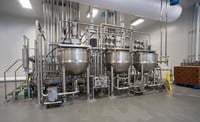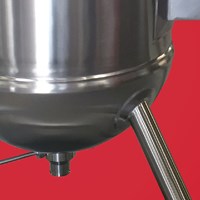Trends
Sign up to be notified of our new blog posts.

Annual Food Manufacturing Surveys Yield Important Equipment Considerations
We’re always paying attention to the issues our customers face in their businesses. That way, we can adapt our products and services to best fit their changing needs. So, the recent release of two annual research reports within the Food Manufacturing industry is particularly interesting.

Reviewing the Best Lessons of 2020
One thing we can all agree on is that 2020 was an eventful year. For those of us in the food processing industry, the developments of 2020 may guide our companies’ opportunities, operations and investments for years to come. We thought it would be helpful to revisit a few of the takeaways from last year that can help you be successful in 2021:

How 2021’s Key Food Industry Developments are Shaping Equipment Decisions
As the sun rises on a new year, food manufactures are seeing opportunities on the horizon. These opportunities, driven by fast-changing consumer behaviors and sentiments, foreshadow an exciting 2021, but may also force operational adjustments to accommodate higher demand and new product innovations. Many of these adjustments will entail decisions to add or modify processing equipment. Here are some of the key developments food manufacturers have on their plates, and the equipment ramifications they will be paying attention to:

How Trends in Pet Ownership and Food are Shaping Pet Food Processing Equipment Decisions
More than ever, Americans love their pets…and that is having a major impact on food processing equipment decisions. Our latest blog article takes a look at recent pet food processing trends and highlights important equipment considerations to optimize production efficiency and performance.

Which lasting effects of the COVID-19 crisis will food manufacturers factor into 2021 planning?
The food industry is near the top of any list of those most directly affected by the coronavirus pandemic. The entire food supply chain -- from farming and processing to distribution and consumption -- has been disrupted, in many cases dramatically. Food manufacturers are sorting through this confusion to ensure they are well-positioned to operate effectively and take advantage of new opportunities. As they look ahead to 2021, several expected long-term effects will factor into their planning. See what to expect in our latest blog article:

Processing Equipment Options for Food Manufacturers to Meet Crisis Demand
Demand for many packaged food products is skyrocketing. Manufacturers are doing everything they can to keep up as they ramp production, while also enforcing heightened disinfection and social distancing directives. For some manufacturers, ramping production will necessitate stocking replacement valves and parts for processing equipment to ensure continuous operation, or even adding processing kettles or tanks to increase throughput. Here is an overview of options in-demand food manufacturers can consider:

A Key Nugget Buried in New Research Identifies How Food Manufacturers Plan to Increase Production
Each year Food Processing magazine conducts research to identify industry trends. At Lee Industries, this is always interesting to us as it highlights the issues on the minds of many of our customers. This year, however, the insight was particularly interesting...

Food Industry Growth Forcing Manufacturers to Rethink Processing Equipment
We’ve been a part of the food manufacturing world for over nine decades, so we know that change is a constant for the industry. But the pace of change today – and its impact on the food manufacturing process – is more significant than ever. Here are some of the key implications we see that will affect how food manufacturers make decisions on their processing equipment:

Three Food Manufacturing Trends to Watch in 2019
Every year brings new opportunities and challenges to every industry. But for food manufacturing, 2019 will be particularly noteworthy, with important issues facing both food processors and equipment manufacturers alike. This year, new regulations, new technology and new competitors will all play significant roles in shaping the food manufacturing industry.